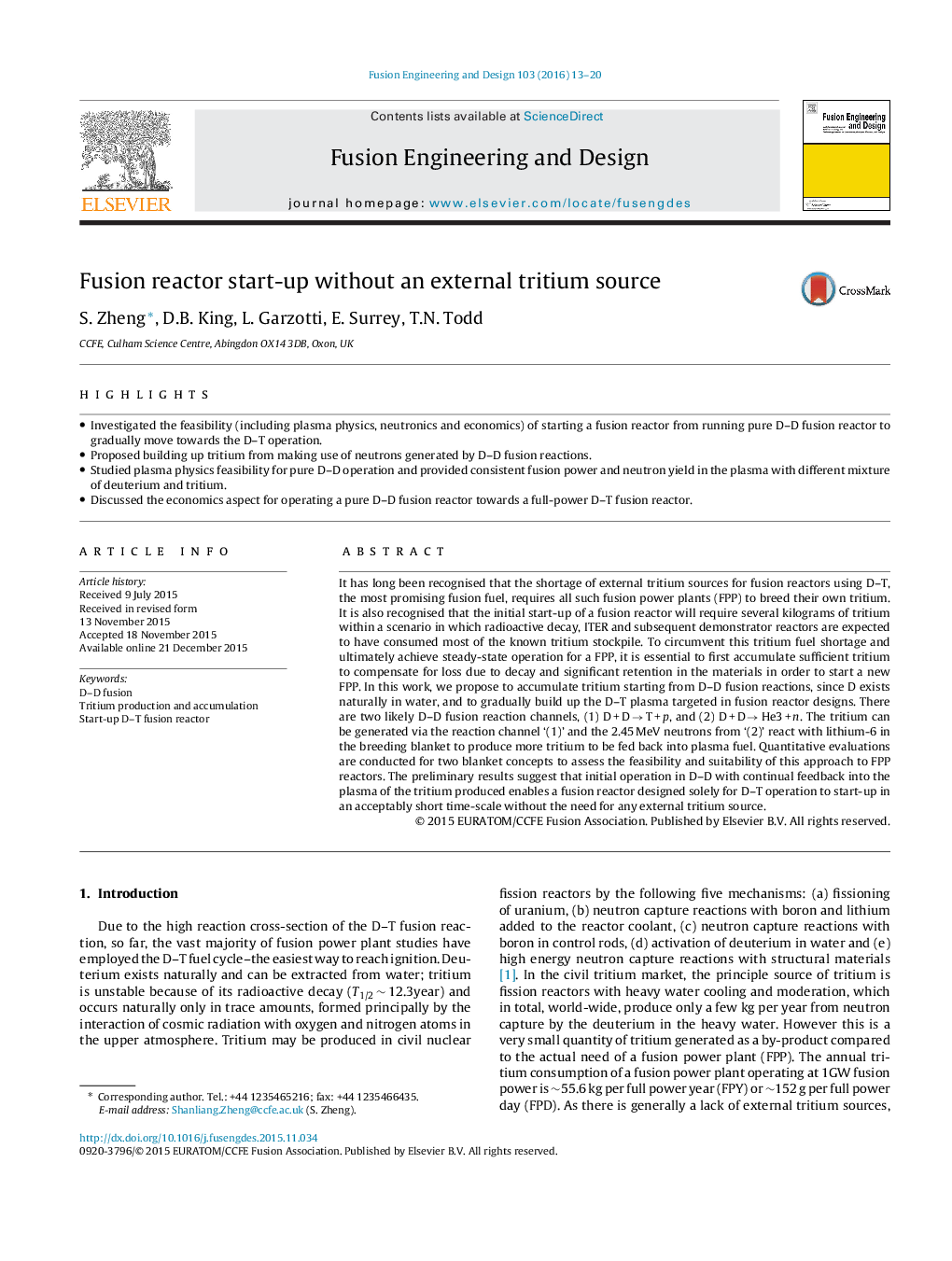| کد مقاله | کد نشریه | سال انتشار | مقاله انگلیسی | نسخه تمام متن |
|---|---|---|---|---|
| 270870 | 504971 | 2016 | 8 صفحه PDF | دانلود رایگان |
• Investigated the feasibility (including plasma physics, neutronics and economics) of starting a fusion reactor from running pure D–D fusion reactor to gradually move towards the D–T operation.
• Proposed building up tritium from making use of neutrons generated by D–D fusion reactions.
• Studied plasma physics feasibility for pure D–D operation and provided consistent fusion power and neutron yield in the plasma with different mixture of deuterium and tritium.
• Discussed the economics aspect for operating a pure D–D fusion reactor towards a full-power D–T fusion reactor.
It has long been recognised that the shortage of external tritium sources for fusion reactors using D–T, the most promising fusion fuel, requires all such fusion power plants (FPP) to breed their own tritium. It is also recognised that the initial start-up of a fusion reactor will require several kilograms of tritium within a scenario in which radioactive decay, ITER and subsequent demonstrator reactors are expected to have consumed most of the known tritium stockpile. To circumvent this tritium fuel shortage and ultimately achieve steady-state operation for a FPP, it is essential to first accumulate sufficient tritium to compensate for loss due to decay and significant retention in the materials in order to start a new FPP. In this work, we propose to accumulate tritium starting from D–D fusion reactions, since D exists naturally in water, and to gradually build up the D–T plasma targeted in fusion reactor designs. There are two likely D–D fusion reaction channels, (1) D + D → T + p, and (2) D + D → He3 + n. The tritium can be generated via the reaction channel ‘(1)’ and the 2.45 MeV neutrons from ‘(2)’ react with lithium-6 in the breeding blanket to produce more tritium to be fed back into plasma fuel. Quantitative evaluations are conducted for two blanket concepts to assess the feasibility and suitability of this approach to FPP reactors. The preliminary results suggest that initial operation in D–D with continual feedback into the plasma of the tritium produced enables a fusion reactor designed solely for D–T operation to start-up in an acceptably short time-scale without the need for any external tritium source.
Journal: Fusion Engineering and Design - Volume 103, February 2016, Pages 13–20
